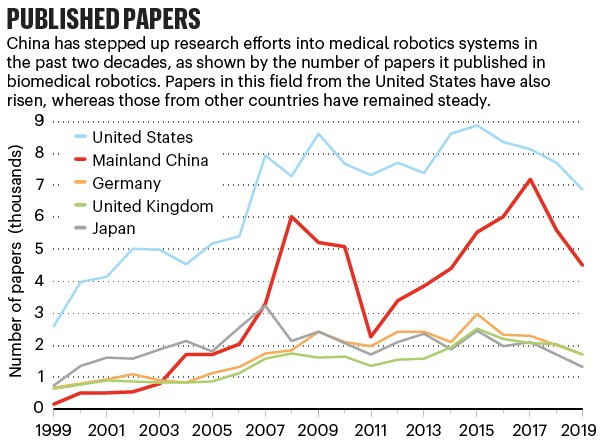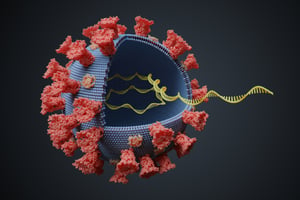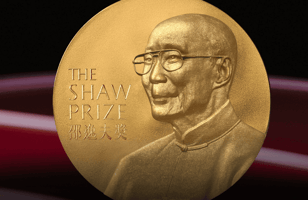The coronavirus pandemic is pushing the bounds of science and technology. The speed and efficacy of...
Does Automated Research Work?
←Back to resources
Science is in a bind. More research (and more good research) exists than ever before. In fact, more than 1.2 million new papers are published annually in the biomedical sciences alone. But a large portion of studies are irreproducible, and most scientists only have the capacity to read about 250 papers a year.

On average, leading research nations are publishing 2-3 times as many papers as they did in 2000.
Quite literally, it’s impossible to keep up with the pace of global research. This massive scale creates inefficiencies and bogs researchers down in data, limiting creativity. Many have asked if artificial intelligence has the potential to overcome this glaring challenge.
According to a recent McKinsey report on automation, AI has primarily been implemented in multiple industries wanting to use the most advanced methods and processes: high-tech and telecommunications, automotive and assembly, and financial services. Education, professional services, and healthcare have been slower to adopt. Nonetheless, AI research, investment, and adoption has soared over the last five years—and it’s given the world some key clues about how automated research works, what it can do for scientists, and what it can’t.
Notably, certain AI techniques clearly match the problems faced by scientists as well as the research and pharmaceutical industries.
AI trained on clustering problems, for example, which requires a system to create a set of categories and sort data points according to those categories, can come in handy in drug discovery and the chemical sciences.
Continuous estimation problems, which train an AI on an existing dataset to estimate the next numeric value in a sequence, have seen fruitful application in astronomy and biology. Other AI technologies such as tree-based ensemble learning and regression analysis are perfectly suited to the advanced electronics and pharmaceutical research industries.
From research review to data analysis to even hypothesis generation, automation and AI have started to play a significant role in the scientific process. Here’s how.
Deciding what problems to tackle
Research suggests that humans are bad at choosing the best set of experiments to run. One cell biology study showed that a machine learning algorithm allowed an experiment to be completed while only performing 29% of the possible experiments—a result that demonstrates huge cost-saving potential for AI in research.
Literature review
The huge volume and uncertain quality of preexisting research poses a serious hurdle for scientists. Pharmaceutical companies such as Eli Lilly are using natural language processing to mine a large volume of data and research more quickly. This technology focuses on retrieving information from hard-to-find places outside the scope of a scientist’s typical literature review—physician’s notes, electronic health records, in addition to peer-reviewed research—to extract the best data from existing clinical trial reports.
Scientists have also turned to NewsRx, a technology company that uses AI to write short articles covering all of the latest peer-reviewed research papers, patents, clinical trials, and more. These shortened descriptions of scientific discoveries allow scientists to parse a larger volume of studies more quickly and decide which studies need to be read in full. When paired with BUTTER, a search-tool that allows a user to narrow down on the exact type of study they are looking for, users see their research process accelerate fast.
Discovery by generation
One useful AI-powered research tool is generative modeling. Generative modeling asks how likely it is, given condition X, that you’ll observe outcome Y, and can help scientists uncover how systems work given the available data. Scientists at ETH Zurich, for example, are using generative modeling to investigate the evolution of galaxies. They can then work backwards from the models to try to explore the physics behind the observed transformation.

Galaxies produced by generative modeling.
Automated analyses
Some AI companies, such as Strateos, offer automated analysis services in the life sciences. Strateos’ chemistry tools allow scientists to design, test, and analyze automated chemical reactions and run hundreds to thousands of samples through protein quantifications via automation, allowing for greater efficiency and less cost compared to the scientists running the experiments themselves.
Market research
While fundamentally different from scientific research in biology or physics, market research does share a lot in common with the scientific research process—and is much further along in the process of automation. Numerous well-regarded automation platforms exist for market research, such as Ipsos, which allows users to identity their target audience, launch a study, and receive automated reports within a few hours.
Research Engine is another tool that offers automated market research studies in behavioral science, branding, pricing, innovation, segmentation, and other specialized areas. The user chooses their template, identifies an audience, and receives an automated report on the results of their study.
It will only be a matter of time before companies begin to look to apply this technology to the world of scientific research, as a new market hungry for automated studies.
Take Autonomio, which has designed intelligent research bots. They present a vision for fully-automated research in the future.
In a fully-automated future, you begin by asking your machine a research question. It dives into an automated literature review, presents you with an interactive summary of findings in your subject of interest, and even goes on to execute experiments and answer complex questions. The limit of science becomes purely that of the human imagination—and perhaps could transcend even that.
Automation in science moves scientists up the “scientific process food chain.” The right algorithm can act as hardworking assistants that allow scientists to focus on the bigger, more important questions. It’s not an undesirable future for researchers—and it is one that is already in motion.

.jpg?width=50&name=DSC_0028%20(1).jpg)


